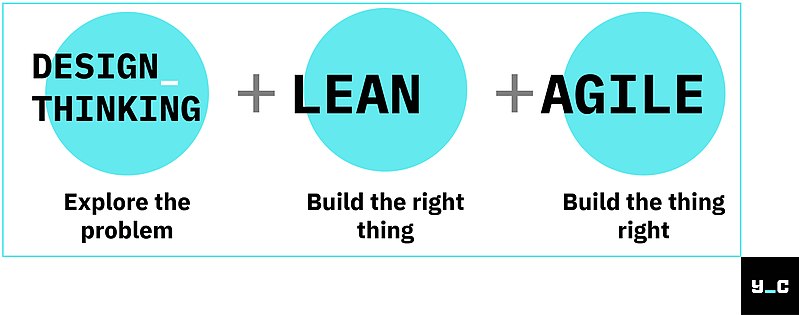Evolution of agile methodologies- A Comprehensive Overview for Project Managers and DevOps Professionals
The journey of agile methodologies is rooted in the evolution of software engineering, beginning in the late 1960s. During this period, the emergence of the software crisis highlighted critical issues within traditional software development practices, leading to the need for more adaptable and responsive approaches. Agile methodologies, which emerged as a response to these challenges, focus on delivering quality software that meets evolving customer needs. As Project Managers and DevOps professionals, understanding this evolution provides valuable context for leveraging agile practices effectively in today’s dynamic environments.
The Software Crisis and the Rise of Traditional Methodologies
The Software Crisis (circa 1965-1970) marked a pivotal moment for software development. As software projects grew in complexity, engineers, scientists, and mathematicians grappled with issues such as project overruns, budget excesses, and unreliable software. In response, software engineering began to adopt traditional methodologies characterized by rigorous planning, detailed documentation, and reliance on CASE (Computer-Aided Software Engineering) tools. These methodologies emphasized:
- Structured Processes: Traditional methodologies followed a linear, step-by-step approach, ensuring that each phase (planning, design, implementation, testing, and maintenance) was completed before moving on to the next.
- Documentation-Driven: Each phase generated comprehensive documentation, which served as the foundation for subsequent stages.
- Predictability and Control: With an emphasis on detailed upfront planning, traditional methodologies aimed to provide predictability and control over the development process.
While traditional methodologies provided structure, they often struggled to adapt to changing requirements, resulting in costly delays and quality issues. By the mid-1990s, these limitations had fueled the emergence of alternative approaches.
The Emergence of Agile Methodologies
In the 1990s, the limitations of traditional methodologies paved the way for agile methodologies, which aimed to address the need for flexibility, responsiveness, and efficiency. Agile was formally introduced in 2001 with the publication of the Agile Manifesto. This landmark document, developed by 17 software industry experts, laid out four core values and 12 principles, emphasizing:
- Individuals and Interactions: Agile prioritizes people over processes, recognizing that effective collaboration is crucial for project success.
- Working Software: Agile focuses on delivering functional software quickly and iteratively, ensuring that users can derive value from the product at every stage.
- Customer Collaboration: Agile encourages continuous collaboration with customers, allowing teams to respond swiftly to feedback and changes in requirements.
- Responding to Change: Agile methodologies embrace change, viewing it as an opportunity for improvement rather than a disruption.
The Agile Manifesto led to the formation of the Agile Alliance, a nonprofit organization dedicated to promoting agile concepts and supporting organizations in adopting agile methodologies. Agile has since evolved into a diverse ecosystem of methodologies, including Scrum, Extreme Programming (XP), Lean Development, and others, each with unique practices and tools tailored to specific project needs.
The Process of Changing Software Elements
Agile methodologies accommodate change seamlessly, allowing for adaptive planning and development. The process of changing software elements involves four key stages:
Determine the Cause of Change: Identifying the reason for change is essential. Whether it’s due to technological advancements, user feedback, or shifting business objectives, understanding the root cause helps ensure that changes are purposeful and aligned with project goals.
Establish the Timing of Change: Agile projects prioritize flexibility, but timing is crucial. Decisions about when to implement changes must consider factors like sprint cycles, project milestones, and team capacity to minimize disruption.
Define the Migration Process: Agile teams develop clear migration plans that outline steps for implementing changes. This includes assessing risks, planning for rollback scenarios, and ensuring continuity during the transition.
Evaluate the Migration: Post-implementation evaluations are essential for assessing the impact of changes. Agile encourages continuous feedback, allowing teams to refine their approach based on user and stakeholder responses.
By following these steps, agile teams can manage change effectively, ensuring that software remains responsive to evolving requirements without compromising quality.
The Current State of Agile Methodologies
Since the Agile Manifesto’s publication in 2001, agile methodologies have transformed the landscape of software development. Two major trends have played a significant role in this evolution:
1. Expansion of Information and Communication Technology (ICT)
The rapid expansion of ICT, coupled with the growth of the internet and the open-source movement, has fueled agile’s popularity. Open-source software, which began to gain traction in the 1990s, has promoted principles of collaboration and transparency that align well with agile values. With the proliferation of tools and platforms like Linux and Firefox, software development became more accessible and community-driven, allowing agile practices to flourish.
2. Rise of Web and Mobile Applications
Today’s software development landscape is dominated by web and mobile applications, which demand agility due to:
- Rapid Market Evolution: Mobile and web applications face intense competition, requiring frequent updates to stay relevant.
- Short Development Cycles: Agile methodologies enable teams to deliver frequent, incremental updates, meeting user demands for new features and improvements.
- Diverse Platforms: Developers must cater to multiple operating systems and devices, each with unique requirements. Agile methodologies support iterative development, allowing teams to address platform-specific needs effectively.
The characteristics of web and mobile applications align well with agile methodologies, making them an ideal environment for agile adoption. As a result, agile has become the preferred approach for developing applications that require adaptability, speed, and continuous improvement.
The evolution of agile methodologies reflects a shift from rigid, document-heavy processes to flexible, adaptive frameworks that prioritize quality, collaboration, and customer satisfaction. Agile methodologies have proven effective in addressing the dynamic challenges of modern software development, from changing requirements to rapid technological advancements.
For Project Managers and DevOps professionals, agile offers a powerful toolkit for managing complex projects in today’s fast-paced digital landscape. By embracing agile methodologies, teams can achieve greater responsiveness, deliver high-quality software, and foster a culture of continuous improvement that drives long-term success.

